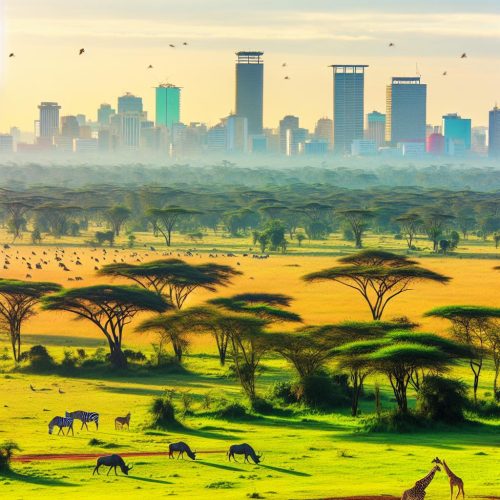Introduction to Nairobi National Park
Nairobi National Park is a unique wildlife sanctuary located just 7 kilometers south of Nairobi’s bustling city center, earning it the distinction as the world’s only national park within a capital city. The park, established in 1946, covers an area of approximately 117 square kilometers and offers a remarkable natural habitat juxtaposed against Nairobi’s urban skyline.
Wildlife in the Park
The park is home to a wide variety of wildlife species, providing a haven for a significant number of animals. Visitors to Nairobi National Park can encounter endangered species such as the black rhinoceros, which is a primary conservation focus. Other notable wildlife includes lions, leopards, cheetahs, hyenas, and buffaloes. Furthermore, the park hosts several bird species, catering to avian enthusiasts and contributing to avifaunal diversity.
Mammals
Among the mammals, the presence of the majestic lion is particularly noteworthy. As apex predators, lions play a vital role in the ecological balance, impacting the populations of other species such as antelope and zebra. Observing a pride of lions basking in the sun or stealthily following a scent trail is a captivating experience. Leopards, with their elusive nature, are less frequently spotted but captivating nonetheless. These agile hunters use the park’s numerous scattered trees as perches and concealment in tall grasses, marking them as stealthy predators.
Hyenas, often misunderstood due to their scavenging habits, contribute significantly to the ecosystem by controlling populations of other species and cleaning up carrion. Meanwhile, herds of buffalo roam the plains, providing spectacles of raw strength and power. Buffaloes, with their heavyset bodies and curved horns, often move in groups, sharing the savannah with gentle giants like the giraffe.
Avian Diversity
Birdwatching in Nairobi National Park is a rewarding endeavor. The park is home to over 500 species of birds, showcasing a diverse array of avian life. Raptors such as the African Fish Eagle and the Martial Eagle soar the skies, while brightly colored Lilac-breasted Rollers and Secretary Birds can be seen darting through the air or striding through the grasslands. The abundance of wetland areas within the park, including the Athi River and various seasonal dams, supports species like herons, egrets, and even migratory birds that travel vast distances.
Conservation Efforts
Nairobi National Park plays a crucial role in conservation education and research. The proximity to the city facilitates easy access for educational institutions and researchers who focus on urban wildlife management and sustainable conservation practices. Additionally, the park houses the David Sheldrick Wildlife Trust, renowned for its elephant and rhino orphanage initiatives aimed at rehabilitating and reintroducing these animals to the wild.
Community Engagement
Efforts to engage with local communities are a critical aspect of the park’s conservation initiatives. By working closely with surrounding communities, the park authorities strive to mitigate human-wildlife conflict while promoting an understanding of the significance of biodiversity conservation. Educational programs aimed at local schools and community groups seek to foster an appreciation for the natural environment and the importance of protecting the park’s resources for future generations.
Visitor Experience
The park provides a highly accessible safari experience for both residents and tourists, offering several attractions and activities. Game drives are a popular way to explore the park, allowing visitors to traverse the diverse terrains and witness wildlife in its natural surroundings. The park’s designated walking trails enable a closer look at the ecosystem’s minutiae, revealing aspects that are often missed during vehicle safaris. Additionally, picnic spots scattered throughout the park offer relaxation amidst scenic views, fostering a deeper connection with nature.
A notable visit within the park is the Ivory Burning Site Monument. This site holds historical significance as it commemorates the first symbolic act in 1989 to combat poaching. The act of burning confiscated ivory was pivotal in drawing global attention to the plight of elephants and rhinoceroses, leading to international measures to curb illegal wildlife trade.
Access and Regulations
Nairobi National Park is easily accessible via Langata Road from the city center. Visitors are encouraged to adhere to park regulations, ensuring minimal disruption to wildlife. The park is open throughout the year, but early morning or late afternoon visits are recommended for optimal wildlife viewing. The cooler hours of the day are when animals are most active, offering more opportunities to witness natural behaviors.
The park’s regulations are designed to protect both visitors and inhabitants. All visitors are expected to respect speed limits and designated pathways to prevent unnecessary stress on the wildlife. Engaging in activities such as feeding animals or stepping out of vehicles outside designated areas is prohibited, ensuring that the delicate balance of the ecosystem is maintained.
For more information and to plan your visit, the official Kenya Wildlife Service website provides further resources and updates on current park conditions and events.
